Cyril Poupon
NEUROSPIN
GeoSP: A parallel method for a cortical surface parcellation based on geodesic distance
Mar 26, 2021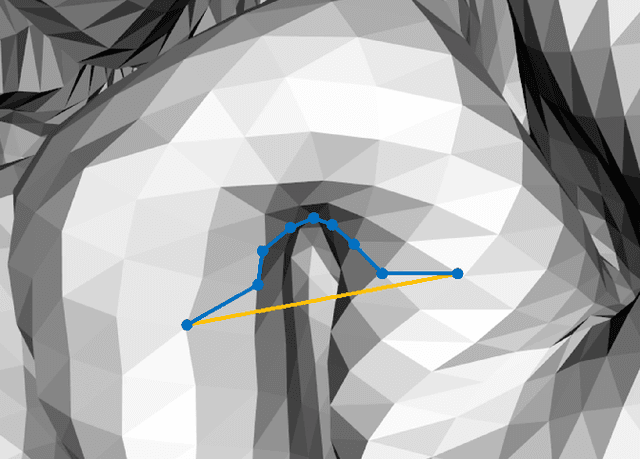
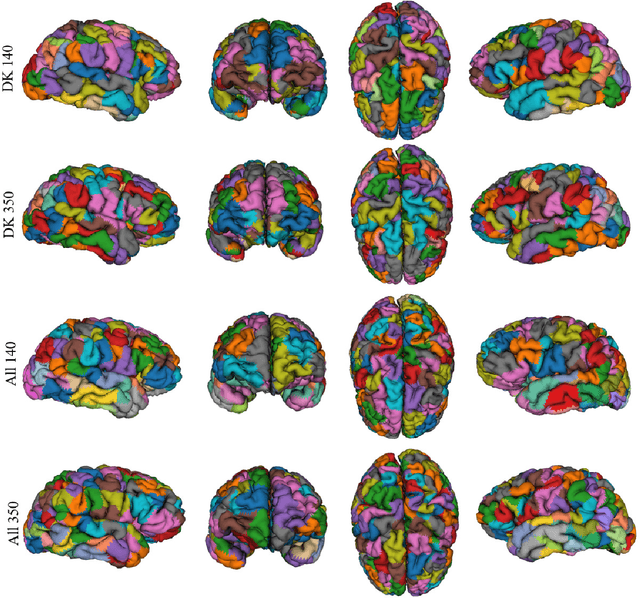
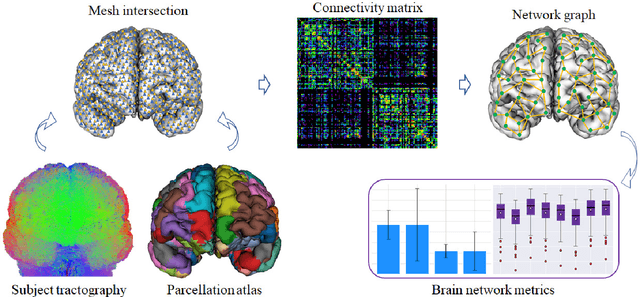
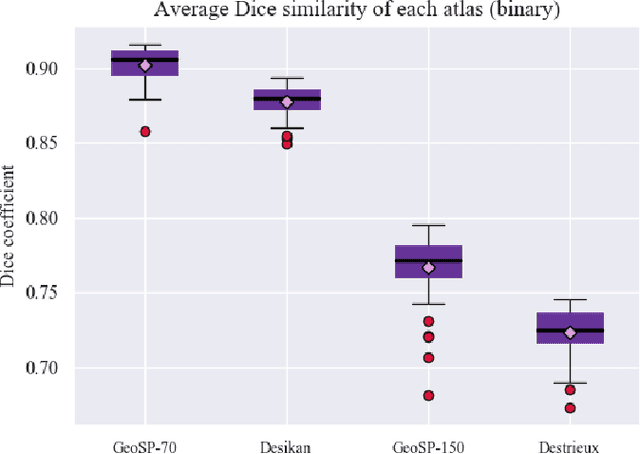
Abstract:We present GeoSP, a parallel method that creates a parcellation of the cortical mesh based on a geodesic distance, in order to consider gyri and sulci topology. The method represents the mesh with a graph and performs a K-means clustering in parallel. It has two modes of use, by default, it performs the geodesic cortical parcellation based on the boundaries of the anatomical parcels provided by the Desikan-Killiany atlas. The other mode performs the complete parcellation of the cortex. Results for both modes and with different values for the total number of sub-parcels show homogeneous sub-parcels. Furthermore, the execution time is 82 s for the whole cortex mode and 18 s for the Desikan-Killiany atlas subdivision, for a parcellation into 350 sub-parcels. The proposed method will be available to the community to perform the evaluation of data-driven cortical parcellations. As an example, we compared GeoSP parcellation with Desikan-Killiany and Destrieux atlases in 50 subjects, obtaining more homogeneous parcels for GeoSP and minor differences in structural connectivity reproducibility across subjects.
Cortical surface parcellation based on intra-subject white matter fiber clustering
Feb 16, 2020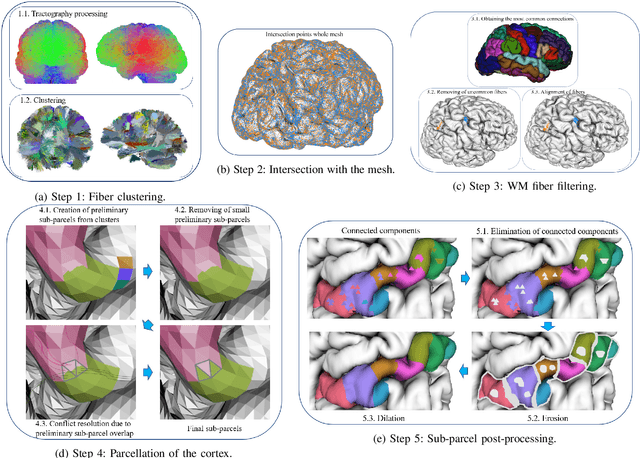
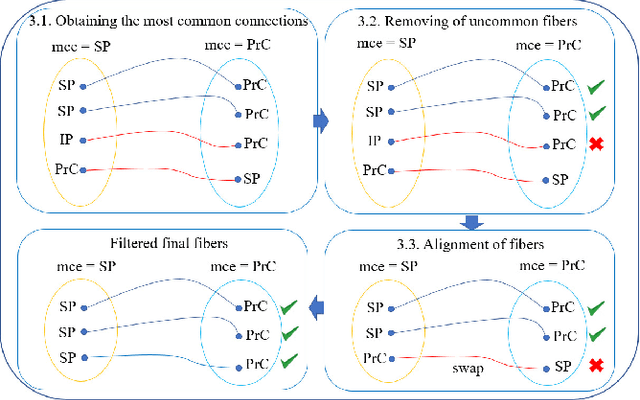
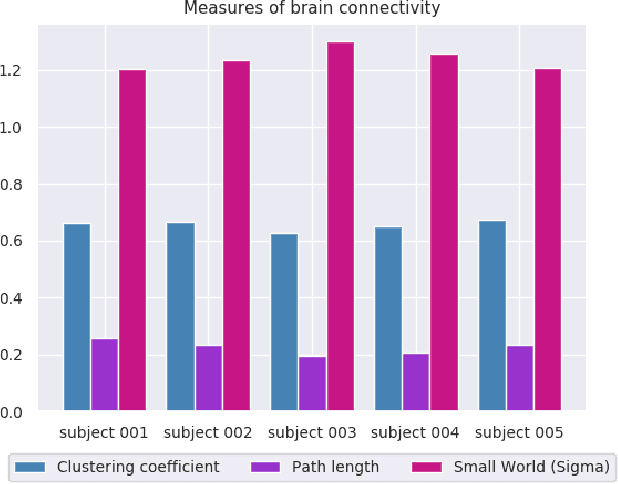
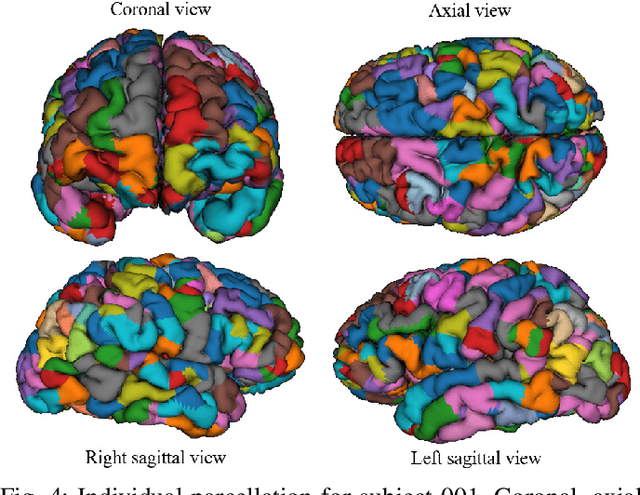
Abstract:We present a hybrid method that performs the complete parcellation of the cerebral cortex of an individual, based on the connectivity information of the white matter fibers from a whole-brain tractography dataset. The method consists of five steps, first intra-subject clustering is performed on the brain tractography. The fibers that make up each cluster are then intersected with the cortical mesh and then filtered to discard outliers. In addition, the method resolves the overlapping between the different intersection regions (sub-parcels) throughout the cortex efficiently. Finally, a post-processing is done to achieve more uniform sub-parcels. The output is the complete labeling of cortical mesh vertices, representing the different cortex sub-parcels, with strong connections to other sub-parcels. We evaluated our method with measures of brain connectivity such as functional segregation (clustering coefficient), functional integration (characteristic path length) and small-world. Results in five subjects from ARCHI database show a good individual cortical parcellation for each one, composed of about 200 subparcels per hemisphere and complying with these connectivity measures.
Parallel optimization of fiber bundle segmentation for massive tractography datasets
Dec 24, 2019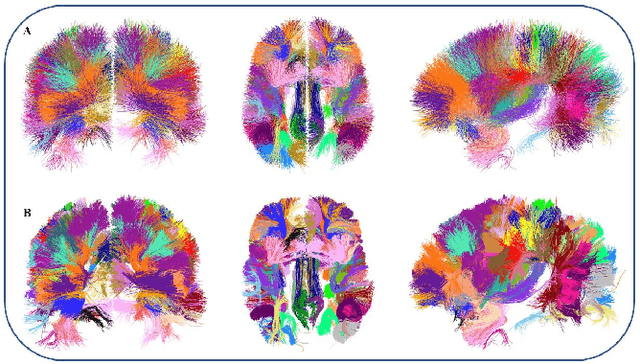
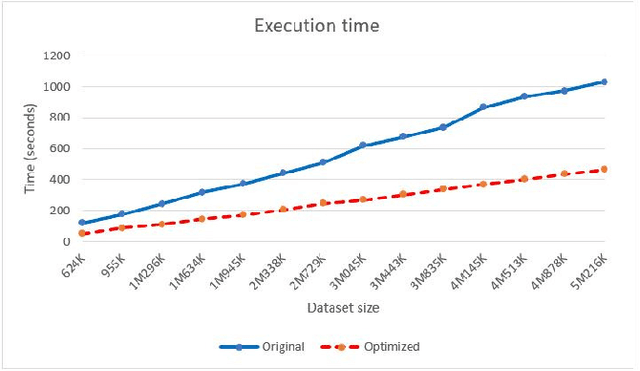
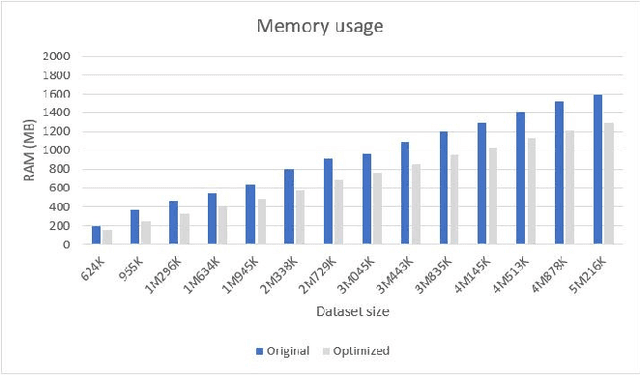
Abstract:We present an optimized algorithm that performs automatic classification of white matter fibers based on a multi-subject bundle atlas. We implemented a parallel algorithm that improves upon its previous version in both execution time and memory usage. Our new version uses the local memory of each processor, which leads to a reduction in execution time. Hence, it allows the analysis of bigger subject and/or atlas datasets. As a result, the segmentation of a subject of 4,145,000 fibers is reduced from about 14 minutes in the previous version to about 6 minutes, yielding an acceleration of 2.34. In addition, the new algorithm reduces the memory consumption of the previous version by a factor of 0.79.
Robust imaging of hippocampal inner structure at 7T: in vivo acquisition protocol and methodological choices
May 09, 2016



Abstract:OBJECTIVE:Motion-robust multi-slab imaging of hippocampal inner structure in vivo at 7T.MATERIALS AND METHODS:Motion is a crucial issue for ultra-high resolution imaging, such as can be achieved with 7T MRI. An acquisition protocol was designed for imaging hippocampal inner structure at 7T. It relies on a compromise between anatomical details visibility and robustness to motion. In order to reduce acquisition time and motion artifacts, the full slab covering the hippocampus was split into separate slabs with lower acquisition time. A robust registration approach was implemented to combine the acquired slabs within a final 3D-consistent high-resolution slab covering the whole hippocampus. Evaluation was performed on 50 subjects overall, made of three groups of subjects acquired using three acquisition settings; it focused on three issues: visibility of hippocampal inner structure, robustness to motion artifacts and registration procedure performance.RESULTS:Overall, T2-weighted acquisitions with interleaved slabs proved robust. Multi-slab registration yielded high quality datasets in 96 % of the subjects, thus compatible with further analyses of hippocampal inner structure.CONCLUSION:Multi-slab acquisition and registration setting is efficient for reducing acquisition time and consequently motion artifacts for ultra-high resolution imaging of the inner structure of the hippocampus.
 Add to Chrome
Add to Chrome Add to Firefox
Add to Firefox Add to Edge
Add to Edge